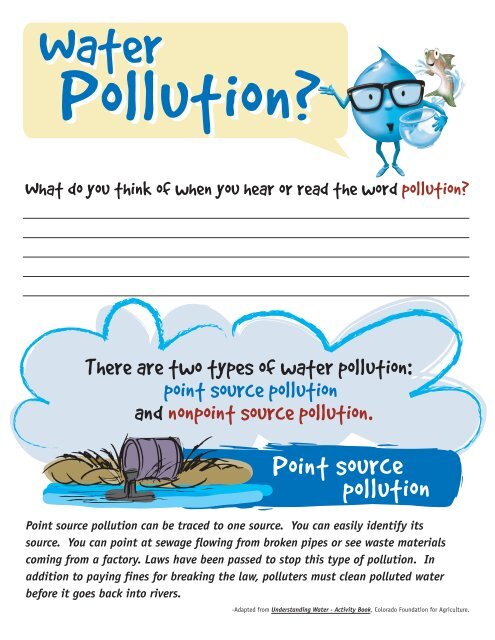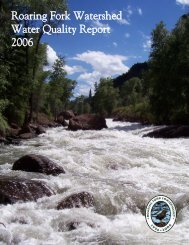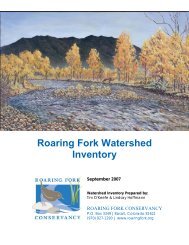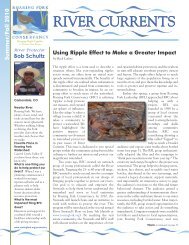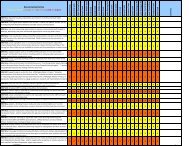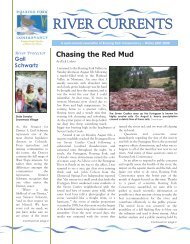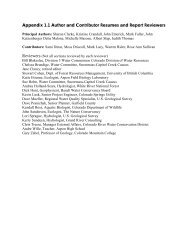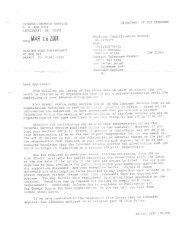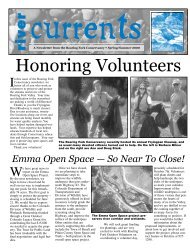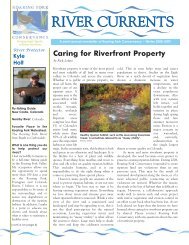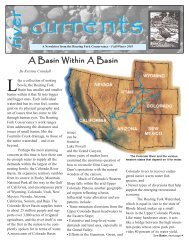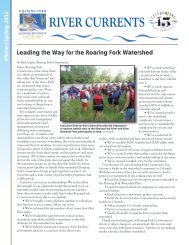Point source pollution - Roaring Fork Conservancy
Point source pollution - Roaring Fork Conservancy
Point source pollution - Roaring Fork Conservancy
You also want an ePaper? Increase the reach of your titles
YUMPU automatically turns print PDFs into web optimized ePapers that Google loves.
Water<br />
Pollution?<br />
What do you think of when you hear or read the word <strong>pollution</strong>?<br />
There are two types of water <strong>pollution</strong>:<br />
point <strong>source</strong> <strong>pollution</strong><br />
and nonpoint <strong>source</strong> <strong>pollution</strong>.<br />
<strong>Point</strong> <strong>source</strong><br />
<strong>pollution</strong><br />
<strong>Point</strong> <strong>source</strong> <strong>pollution</strong> can be traced to one <strong>source</strong>. You can easily identify its<br />
<strong>source</strong>. You can point at sewage flowing from broken pipes or see waste materials<br />
coming from a factory. Laws have been passed to stop this type of <strong>pollution</strong>. In<br />
addition to paying fines for breaking the law, polluters must clean polluted water<br />
before it goes back into rivers.<br />
-Adapted from Understanding Water - Activity Book, Colorado Foundation for Agriculture.
Nonpoint<br />
<strong>source</strong> <strong>pollution</strong><br />
Nonpoint <strong>source</strong> <strong>pollution</strong> comes from many<br />
different <strong>source</strong>s. There are many possible<br />
<strong>source</strong>s of the dirty “stuff” in streams and<br />
lakes. For example, each time it rains, runoff from the street picks up litter,<br />
motor oil, pet (animal) waste, leaves, grass clippings and spilled chemicals.<br />
These things are washed into storm drains and make their way to our rivers<br />
and streams.<br />
Nonpoint <strong>source</strong> <strong>pollution</strong> (NPS) is also runoff<br />
from rainfall and snowmelt moving over and<br />
through the ground. The runoff carries natural<br />
and human-made pollutants into lakes, rivers,<br />
streams, wetlands and other water systems.<br />
Nonpoint <strong>source</strong> <strong>pollution</strong> existed even before<br />
people started building roads, houses and<br />
businesses. Heavy rains carry dirt, soil and<br />
other things into rivers and streams.<br />
Each time it rains,<br />
runoff from the street<br />
picks up litter, motor<br />
oil, pet (animal) waste,<br />
leaves, grass clippings<br />
and spilled chemicals.<br />
Circle the items that can pollute water.<br />
SOIL<br />
PAINT<br />
GASOLINE<br />
PAPER<br />
MOTOR OIL<br />
LITTER<br />
LEAVES<br />
CANS<br />
BOTTLES<br />
PET WASTE<br />
CHEMICALS<br />
ABANDONED CARS<br />
-Adapted from Understanding Water - Activity Book, Colorado Foundation for Agriculture.
What do you see in the picture?<br />
How can we help the fish?<br />
-Adapted from Understanding Water - Activity Book, Colorado Foundation for Agriculture.<br />
The Environmental<br />
Protection Agency (EPA)<br />
says that nonpoint <strong>source</strong>s<br />
are the main cause of our<br />
water <strong>pollution</strong>


